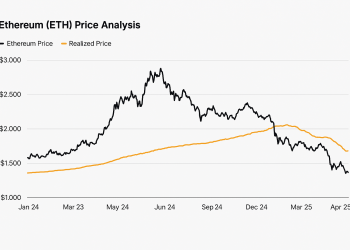Emerging-market currencies surged on Friday, concluding a volatile start to August with the largest weekly gains seen this year. This upward movement was fueled by a weaker dollar and a rebound in global equities, enhancing risk appetite among investors.

MSCI EM Currency Index Hits Two-Year High
The MSCI EM currency index posted gains for the second consecutive day, briefly reaching its highest level in two years. The South Korean won, Malaysian ringgit, and Israeli shekel were among the currencies leading this upswing. Additionally, equities rallied, with Taiwan Semiconductor Manufacturing Co. at the forefront of the stock climb, reporting a significant jump in July sales driven by robust demand for AI-related chips.
Despite a global unwinding of carry trades occurring earlier in the week, emerging-market currencies displayed remarkable resilience. A strengthening Japanese yen also contributed to the dollar’s softness, facilitating a shift in flows toward riskier assets. According to strategists from Societe Generale SA, including Phoenix Kalen, the diminishing yield and carry associated with long US-dollar positions are likely to provide further support to emerging-market currencies, bonds, and interest rates.
Emerging-Market Currencies Outperform Higher-Yield Counterparts
Stephen Chiu, chief Asian FX strategist at Bloomberg Intelligence, noted, “As market players adjust their positions for the anticipated Federal Reserve rate cut and the ongoing unwinding of carry trades, emerging-market currencies are expected to appreciate against the dollar, particularly those with lower carry yields outperforming their higher-yield counterparts.”
Growing speculation regarding potential Federal Reserve interest rate cuts in the coming months has put downward pressure on the dollar, alleviating the burden on central banks in emerging markets like India and Indonesia, which have had to intervene to stabilize their currencies this year.
Chiu’s Forecast: Emerging-Market Currency Gains Likely to Continue
Chiu forecasts that the gains for emerging-market currencies are likely to persist until the next Fed rate decision, unless officials adopt a more hawkish stance or if US economic data reveals unexpected improvements.

Across Europe, stock markets advanced, and US equity futures inched higher as investors awaited additional US economic data that could substantiate signs of resilience within the world’s largest economy. The Stoxx Europe 600 index rose by 0.7%. This week was characterized by volatility, with the index experiencing significant fluctuations amid worries about economic conditions in the US and the unwinding of yen carry trades. The S&P 500 and Nasdaq 100 futures also recovered following a strong daily performance, with the S&P achieving its largest daily increase since November 2022. Treasury yields declined, contributing to a reduction in a gauge measuring the dollar’s strength.
A favorable jobs report released on Thursday alleviated some recession fears that had arisen after a weak employment report last week. The market’s focus now shifts to next week’s US economic data, particularly consumer inflation and retail sales, as investors seek evidence of a soft landing for the economy.
Federal Reserve Mixed Signals Create Investor Uncertainty
Mark Haefele, chief investment officer at UBS Global Wealth Management, cautioned that market volatility could persist. However, he advised against overreacting to fluctuations in market sentiment, asserting that with sound economic and earnings fundamentals along with a likely Fed interest rate cut, his base-case outlook is for the S&P 500 to close the year at approximately 5,900, a considerable increase from its Thursday close of 5,319.
Mixed signals from Federal Reserve officials may create unease among investors. Federal Reserve Bank of Kansas City President Jeffrey Schmid expressed reluctance to support a rate reduction while inflation remains above target, complicating the Fed’s policy stance. Swap traders have also reduced their expectations for aggressive rate easing in 2024. At one point, market assumptions indicated a 60% chance of an emergency rate cut by the Fed prior to the September meeting, although current pricing suggests around 40 basis points of cuts by then.
In European markets, the Italian insurer Assicurazioni Generali SpA’s shares declined due to earnings falling short of estimates, impacted by claims resulting from recent storms and flooding in Europe. In contrast, Hargreaves Lansdown Plc saw its stock gain after a consortium involving CVC and ADIA agreed to acquire the investment manager for £5.4 billion ($6.9 billion).
In Asia, the stock market’s momentum waned as the yen resumed its ascent, causing Japan’s Topix index to narrow its earlier gains. Meanwhile, Chinese equities stalled as market participants adjusted their views, attributing an unexpectedly positive inflation figure to temporary seasonal factors rather than a sustained trend.

Oil prices remained stable after a rally on Thursday amidst ongoing tensions in the Middle East, while gold prices edged lower.
Key Market Movements Highlights:
Stocks:
– Stoxx Europe 600 rose 0.7% at 9:29 a.m. London time.
– S&P 500 futures gained 0.2%.
– Nasdaq 100 futures climbed 0.4%.
Currencies:
– Bloomberg Dollar Spot Index fell 0.1%.
– Euro held steady at $1.0919.
– Japanese yen remained unchanged at 147.14 per dollar.
Bonds:
– 10-year Treasury yields fell by two basis points to 3.96%.
– Germany’s 10-year yield saw a two basis point decrease to 2.25%.
– Britain’s 10-year yield dropped by two basis points to 3.95%.
Commodities:
– Brent crude dipped 0.3% to $78.89 per barrel.
– Spot gold decreased 0.2% to $2,423.59 per ounce.
Stay tuned for more updates on this evolving story on the Turkish NY Radio.





















































































![BitTorrent [New]](https://s2.coinmarketcap.com/static/img/coins/64x64/16086.png)























